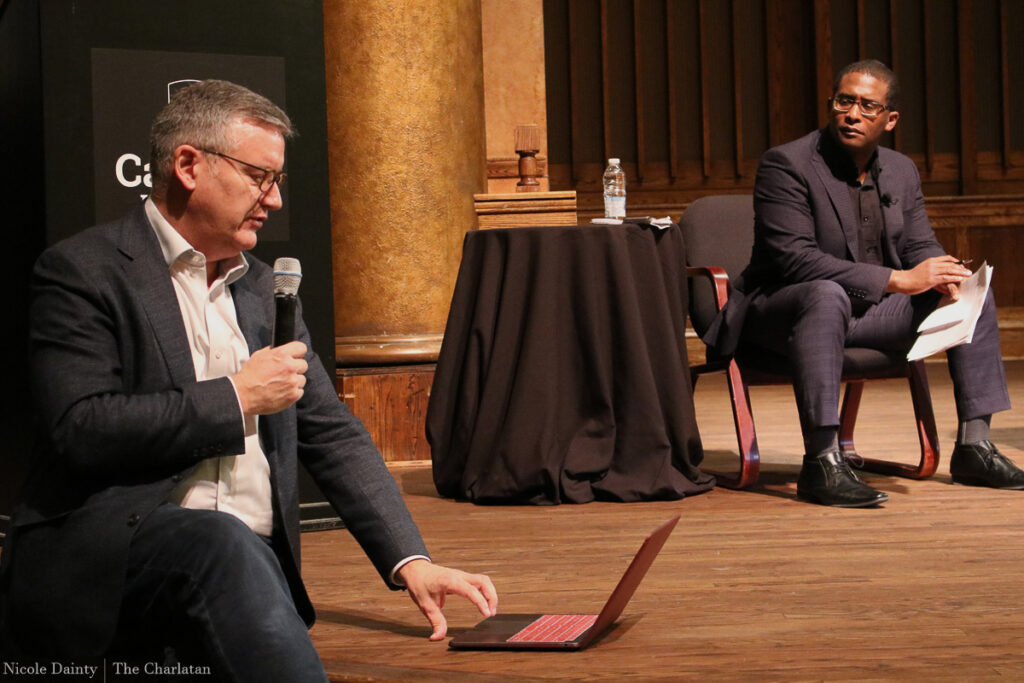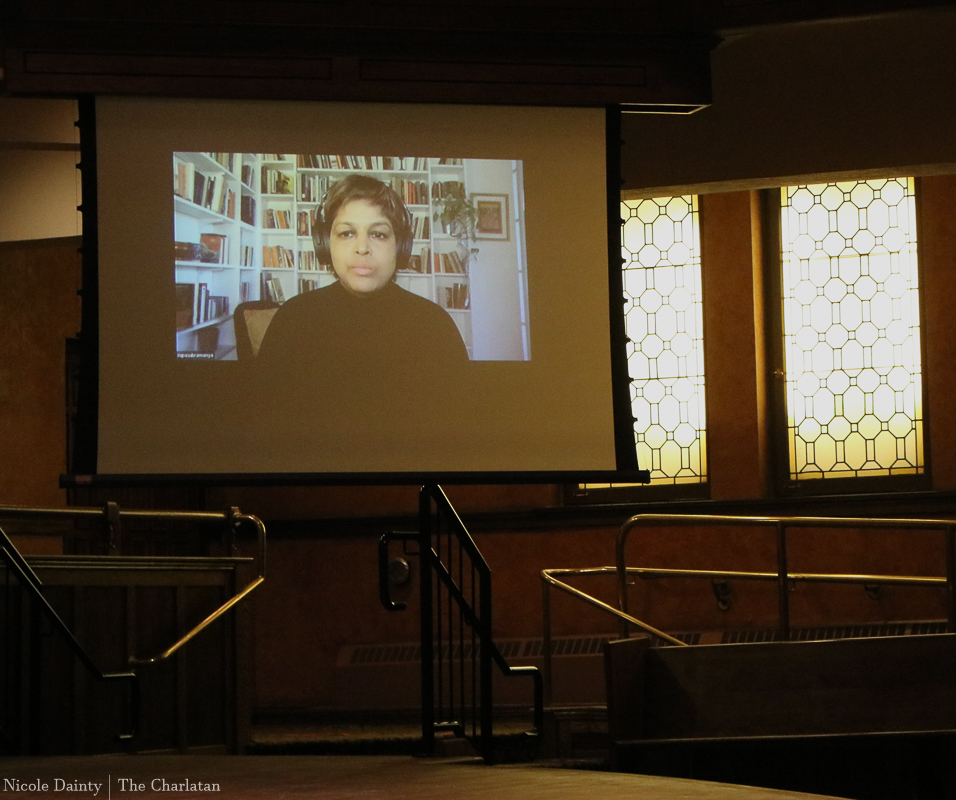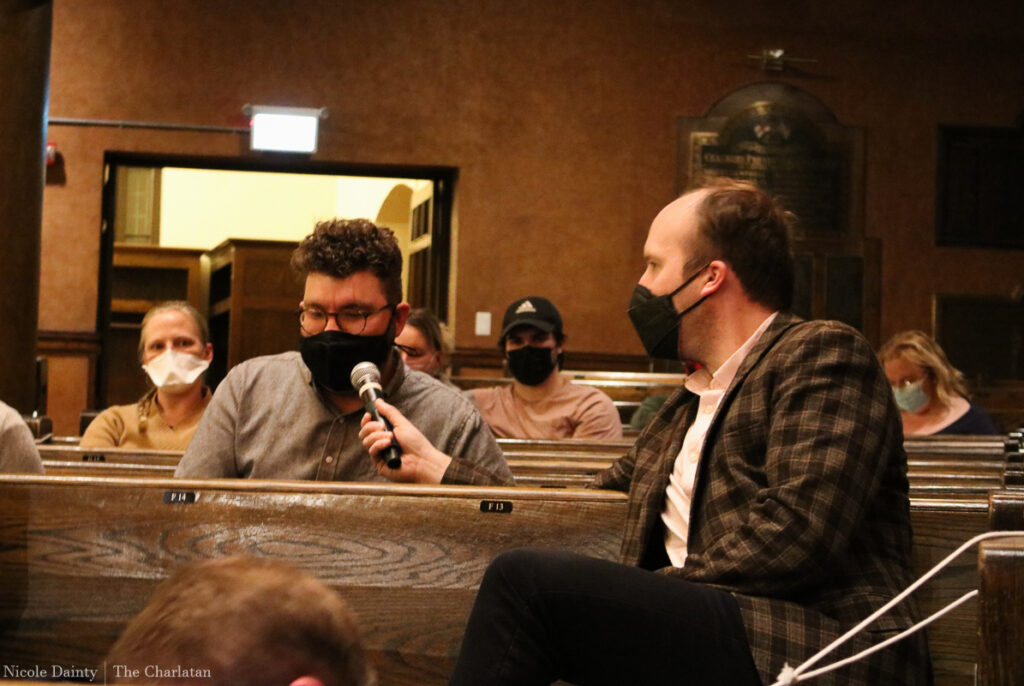A panel of journalists discussed reporting on the ‘Freedom Convoy’ and shared conflicting perspectives on the nature of the protest during an event on March 8 hosted by Carleton’s School of Journalism and Communication.
The event took place in person at the Carleton Dominion-Chalmers Centre and was recorded and published online afterwards.
While the panel was divided on the nature of the protest—some arguing it was a violent occupation and some that it was a lawful protest—they agreed that the protesters distrusted the media overall.
The ‘Freedom Convoy’ settled in Ottawa’s downtown core on Jan. 29 and blocked traffic and movement within the city’s Centretown neighbourhood for around three weeks. On Feb. 18, Ottawa’s police organized an operation to push the protestors out, arresting over 100 individuals. By the following day, 47 more arrests were made and the police eventually successfully cleared Wellington Street in front of Parliament Hill.
Adrian Harewood, a CBC News anchor and associate professor at Carleton, moderated the event. He asked the panelists whether the protest was “peaceful, violent or something in between.”

“I wanted people to understand that part of it that it wasn’t just fun,” Trinh said, “that it was individuals who had these paramilitary skills, who could use it to entrench within the city, who perhaps had access to firearms.”
Trinh said she discovered several protesters were members of Joint Task Force 2, a Canadian special operations forces unit, although she did not know why they were there. She added there were at least 10 active soldiers who were “sympathetic to the cause,” potentially possessing firearms.
“This was a real threat, this wasn’t just people protesting peacefully,” Trinh said.
Justin Ling, a freelance investigative journalist, agreed with Trinh. Ling specializes in covering extremist groups and from this experience, he said he understood the convoy had “nothing to do with anti-vax groups.” Instead, he said the convoy supporters were from extremist and conspiracy groups.
“These people don’t believe the media,” he said, “and that’s what makes them dangerous.”
Some panelists disagreed. Columnist Rupa Subramanya, who has previously written for the National Post and Nikkei Asia among others, was unable to attend but provided a pre-recorded video message shown at the event. In the video, she claimed the convoy was a lawful display of civil disobedience.

CBC News’ Jorge Barrera said he attributed the protests to a crisis of authority and said protesters seemed to have lost faith in institutions intended to represent them. Barrera said some people he interviewed had tried emailing members of parliament but received no response.
“The system was oppressing them, so they are now protesting legitimate concern,” Barrera said.
According to Raisa Patel, a Toronto Star reporter, Prime Minister Justin Trudeau emboldened the protesters when he referred to them as a “fringe minority with unacceptable views.”
Patel mentioned that she had to temporarily take down her Twitter account due to online harassment by protesters.

McGregor, a senior political correspondent for CTV, said the majority of protesters sought to disturb their filming process.
“This [harassment by protesters] was happening every night. It was different people every night but they were united in this disbelief in media., he said.
Justin Tang, an Ottawa-based photojournalist, said while he thought his camera would draw attention at the protest, wearing a mask could draw even more, so he didn’t wear one. He did what he could to blend in, do his job and go home as quickly as possible.
Despite their debate on the nature of the protest, all the panelists agreed the protestors’ distrust in the media meant journalists on the ground felt unsafe covering the convoy.
Featured image by Nicole Dainty.






